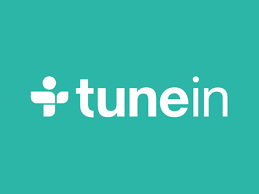FT8 to be Permitted in 2019 ARRL RTTY Roundup
/The ARRL Contest Branch has announced that participants in the 2019 ARRL RTTY Roundup will be permitted to use the new FT8 protocol, which is part of the WSJT-X software suite. The RTTY Roundup takes place 5-6 January 2019. A "Practice Contest" has been set for 24th October 2018 UTC (Thursday 25th October 2018 in North American time zones).
“Even though digital modes other than RTTY have been permitted in the RTTY Roundup for 30 years, FT8 was excluded in 2018, because it could not manage the required exchanges. Through the work of the WSJT-X development team, the latest version of FT8 can handle the necessary exchanges that earlier versions were unable to do.”
Some limitations will apply to FT8 entrants. Participants must use WSJT-X version 2.0 or later to ensure they are able to transmit and receive the exchange messages the event requires. No unattended operation, including QSO/macro automations, will be allowed. Neither is FT8’s Fox-and-Hounds mode; each contact must be carried out in a one-to-one mode, manually accepting/logging each contact.
Since ARRL contest rules regarding spotting assistance prohibit the use of “automated, multi-channel decoders” by Single-Operator entrants, stations using software that decodes more than one FT8 signal at a time will have to enter as Single-Operator Unlimited or as Multioperator, just as PSK participants have had to do in the past when using fldigi or DigiPan software.
Logging software developers have been advised that “DG” will be accepted as a mode abbreviation for all digital QSOs other than RTTY, which will continue to be designated as “RY.” This will assist the ARRL Contest Branch in distinguishing RTTY from other digital-mode contacts in order to assess the popularity of each. Logs designating all contacts with “RY” will be accepted, however.
The Contest Branch is encouraging all participants to make the use of FT8 a success in RTTY Roundup by managing frequency selection and being patient with new contest operators. FT8 users also are advised to spread out to help increase decoding and contact success. The FT8 users’ groups and online discussions will offer information about alternate carrier frequencies for FT8.
“This is a great opportunity for beginners interested in digital mode contesting. If you are a first-time RTTY, FT8, or other digital-mode contester, understand that high power and large antennas are not necessary for successful decodes.”
Complete rules are on the ARRL website.
Short “Practice Contest” Set for ARRL RTTY Roundup Participants Planning to Use FT8
A 1-hour “practice contest” will be held next week on Wednesday, 24th October 2018, 0200 –0300 UTC (Thursday 25th October 2018, in North American time zones). Use dial frequency 7.078 kHz, moving up in 2 kHz increments if interference is too great.
To participate you must use WSJT-X version 2.0.0-rc3. Installation packages for Windows, Linux, and macOS are near the bottom of the page. This version is “Release Candidate 3,” a beta-test version. A full release of WSJT-X 2.0 is targeted for release on December 10. There’s also a revised Quick-Start Guide to WSJT-X 2.0-rc3. FT8 co-developer Joe Taylor, K1JT, advises reading the entire document before using WSJT-X 2.0. (Changes in RC3 relative to RC2 are described starting on page 7.)
Some important reminders:
On the “Settings/Advanced tab”, check the boxes that say “Always generate 77-bit messages,” “Decode only 77-bit messages,” and “ARRL RTTY Roundup.” In the field labeled “Exch,” enter the 2- or 3-letter abbreviation for your state or province (US/Canadian stations), or enter DX if you are not in the US or Canada.
Be sure that 7.078 appears in your drop-down frequency list for FT8 mode. You might need to do a reset on the Settings/Frequencies tab. If the subband starting at 7.078 becomes overcrowded, move to a higher dial frequency in 2 kHz increments — 7.080, 7.082, etc. Type Ctrl+Shift+F12 to move up by 2 kHz, or Ctrl+Shift+F11 to move down by 2 kHz.
Do not use a compound or nonstandard call sign in this event.



